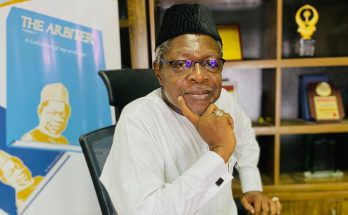On March 13, 2014, I was in Yola, Adamawa State on a peace building experience sharing visit during which we were hosted by the management of the American University in Nigeria (AUN) and officials of the Adamawa Peace Council (an interfaith initiative working to ensure that peace is maintained in the state). Adamawa State is one of the three states under emergency rule and its northern tip, bordering Yobe and Borno States has been repeatedly under attack from the insurgents, resulting in the death of many people. Thousands of people have been displaced, and are now living in both formal and informal refugee camps both within and outside the country. There is an acute humanitarian crisis as lives of those displaced have been disrupted and they hang on to virtually nothing.
The Adamawa Peace Council and the AUN are engaged in a joint peace building effort to secure the peace of not only Yola, the immediate host community of the university but also for the whole state. The efforts concretized the concept of the gown meeting the town in a symbiotic partnership that should be a model for other universities, and indeed all institutions of higher learning to emulate.
The Peace work of the two rests on six pillars. These pillars derive from the philosophy of the university which is to set itself as the first development university in the country where students are trained to understand and solve problems in accordance with their deepest values and beliefs, using interdisciplinary approach to education. This philosophy commits the university to helping its community and society achieve equitable and sustainable prosperity, where all have the freedom and opportunity to pursue their dreams, based on respect for the traditions, religion and cultural heritage of the students.
The university is helped in this by its huge investment in information and communication technology (ICT) infrastructure. It has one of the best data centre in the world, an award winning e-library, a fully wireless campus and huge bandwidth that allows it to give to a number of places in its host environs. To underscore the seriousness with which it regards its huge ICT investment, it was able to poach the West African Regional manager of CISCO, the leading networking equipment and e-learning company, to be its Chief Information Officer. All classes, laboratories, theaters, hotels, and indeed all facilities are not only connected to a wireless network but are ICT compliant and managed with24-hour electricity supply.
Not surprising the first pillar of the peace initiative leverages this excellent ICT infrastructure. Noting that unemployment is one of the causative factors for youth restiveness, a push factor for recruitment into the camps of insurgency, the ICT-based entrepreneurship training of Adamawa Peace Council and AUN seeks to turn vulnerable youth to job creators.
The second pillar connects the university students with pupils of secondary schools in the state. This programme code-named STELLAR (Student Empowered through Language, Literacy and Arithmetic) a mentoring programme. With STELLAR, the university helped to establish science and technology clubs in secondary schools and use its students as mentors to the pupils, teachers and motivators. The fourth plank is JAMB tutoring programme. Here students of the university provide couching on writing JAMB examination for prospective candidates. This is a free service to the community whose objective is to assist candidates pass with the requite grades for admission to higher institutions. Like STELLAR, the tutoring is done in the campus, thus introducing the candidates to a university life with the aim of motivating them to aspire to get a place. The tutoring also helps the university students to deepen their understanding of their subjects and provide with a leadership training opportunity.
Pillar number five connects the university with members of the host community directly. This is the valuables from waste project. Driven by the Office of Sustainability of the university, the Yola EcoSentials is built around three r’s- reducing, reusing and recycling waste. It is a venture created to recycle discarded materials into valuable art goods such a purses, mats, handbags and wristlets while reducing the consumption of such wasting resources as paper, water sachets, etc. As a wireless campus, its electronic marking system means that paper is not used for examinations.
The sixth pillar has two components. Peace through sports organizes youth in the various communities into sporting clubs and regularly host competitions among them. For now the focus is on football and basketball but there are plans to develop other sports. Motivational prizes are mobilized from within the university and community. The sporting engagements help to reduce idleness and socialize the youth into competitive and cooperative spirits. The second strand is the Annual Yola Peace Day, celebrated usually as part of the graduation ceremony of the university. These are spaces for people from all parts of the country to come and share ideas and experience on promoting peace in the society.
To complement these regularized programmes, the university and the Adamawa Peace Council have recently launched a drive for mobilizing relief materials to be distributed to displaced persons. In this, the two are collaborating with the Centre for Women and Adolescent Empowerment, a Yola based NGO which has set up a relief distribution outlet at Mubi, northern Adamawa. The materials mobilized by the two are to be taken to Mubi at the end of this March and is to be continued. A new initiative also is in the cooking, focused on attending to the problems of almajirai in the community.
Ya’u wrote from Abuja



